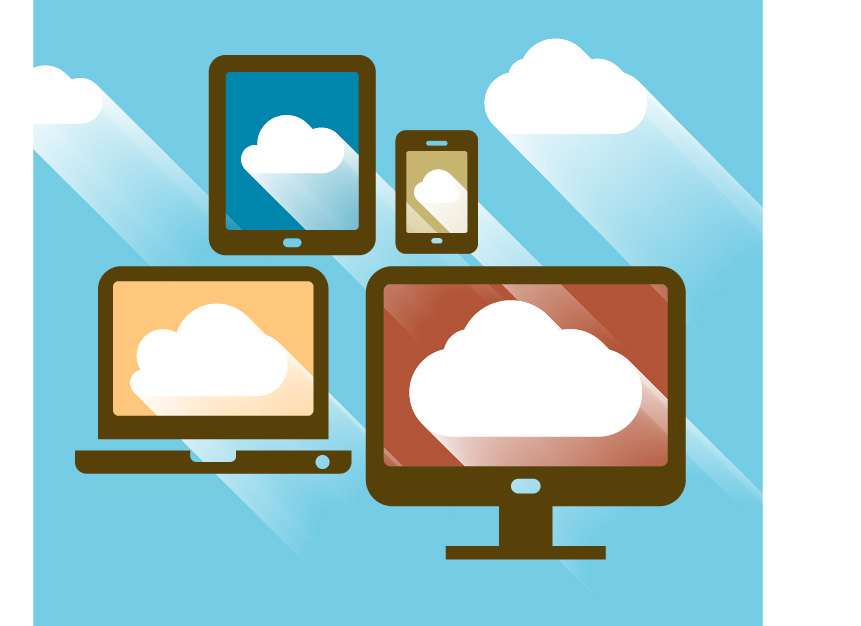Nearly every business is using some form of cloud computing or storage service. And why not? The explosion of data sources and the need to utilize that data meaningfully means organizations will turn to a place that not only enables them to store data but access applications as well.
No wonder cloud computing has transformed so many businesses throughout the past decade with its scalability, versatility, and reliability.
Companies are using public, private, and hybrid clouds in different ways, shaping the direction of the space in 2018. And this trend will only gather traction as cloud computing matures. Let’s check out some of the developments in store for cloud computing this year:
1. Multicloud strategies

As the name suggests, multicloud strategies use one or more cloud computing services to prevent the loss of downtime and data, and avoid issues related to vendor lock-in. A multicloud strategy normally involves a mix of service (IaaS) and public infrastructure environments, and the strategies are not built around a single cloud.
The outcome of multicloud strategies is a better future, thanks to the speed, features, and capacity offered by certain cloud providers. A few businesses also use multicloud for data sovereignty purposes because they do not wish to be locked in.
So, a multicloud strategy boils down to locating the best cloud service for technical and business requirements, thereby saving millions of dollars annually in infrastructure and cost reduction (remember, you cannot print your own money, no quantitative easing for you!). Moreover, different clouds provide different functionality and innovation, which means enterprises stand to benefit from all that the clouds have to offer.
2. New form of data ownership
As new cloud ecosystems, including borderless ones, emerge in the industry, and new regulations, such as the General Data Protection Regulation (GDPR) are implemented, data ownership will no longer remain the same in 2018.
Organizations cling to the idea that they are the owners of the collected data, and are free to do whatever they want with it. But GDPR will change the perspective of data ownership to focus more on the user. So, new rules to protect the consumer data of individuals or suffer reputational damage and hefty fines will come into play in 2018.
3. Industry-specific cloud computing
Industry-specific clouds will soon become standard for fulfilling the unique requirements, specific regulations, and capability needs of various industries. You need to realize that different industries work differently. Plus, cloud computing isn’t just restricted to business.
In fact, sectors as varied as health care, government, insurance, life sciences, financial services, and legal are some of the popular users of industry-specific clouds. And the user base will only become more diversified in 2018. Even Taco Bell uses the cloud (it is a major business!) and damn, those chalupas are good!
4. Moving to the private cloud

2018 is the year when cloud computing goes private. This might have something to do with the fact that more and more companies want to exercise complete control over their computing resources.
It’s not surprising that they would agree to pay more every month and deal with hidden expenses just so they could access the necessary amount of computing power from AWS and other cloud services. But aside from the sudden line items showing up on monthly invoices, cloud customers may also have to shell out additional fees for staying covered against cyberattacks and performance issues.
Private clouds are meant for specific clients, which means operations are conducted from a secure cloud-based environment. Only one entity, like the company, the organization, or yourself is provided access to the private cloud for greater control and privacy. Private clouds boast improved reliability and security, thereby proving a cost-efficient method for small and large businesses.
5. Invisible infrastructure
If your business is searching for cloud offerings that keep their infrastructure under wraps and turn them invisible, then seamless integration of cloud, hybrid, and on-premises infrastructure is within your grasp. Thanks to this type of invisible infrastructure (which is realistic unlike that flying aircraft carrier in “The Avengers” that turned invisible, although the movie overall was solid), 2018 will witness adopters conducting business irrespective of where applications live.
The steady transition of organizations to the cloud, however, doesn’t imply that they’ll immediately search for zip-and-replace techniques. Especially in big companies, organizations will seek partners that allow them to fulfill their digital transformations while harnessing the significant power of the technology investments already in place.
6. Challenges to data migration
As businesses enjoy access to numerous data-specific applications and superior storage capabilities, enterprises will reach out to independent partners and software vendors for moving huge data volumes to the cloud platform.
In fact, according to the 2017 Executive Cloud Survey by Commvault, 68 percent of IT industry leaders admitted that the sheer volume of data they needed to move prevented them from transferring more data and apps to the cloud.
So, as IT continues to streamline the cloud management tools, multicloud will become more popular. For this reason, you can expect the budget of IT teams to spend more money on diversifying cloud storage options rather than duplicating management systems, such as data recovery, data backup, or disaster recovery. IT teams should be able to move, manage, and utilize that data across every cloud.
7. Pose stiff competition to traditional means of storage

More and more companies are beginning to offer software-defined storage options to enterprises seeking virtualization of their datacenter. This means traditional storage vendors will now try to stay relevant in the industry. With the cloud mentality becoming commonplace, regular backup hardware and software solutions will begin losing shares over the course of the next three to five years.
Distributed systems and software-defined storage approaches are a novelty for numerous organizations, which is the reason why backup should be the starting point. The thing is, backup solution vendors have been a part of the industry for over a decade and now they will find it difficult to stand up to agile startups that introduce fresh approaches to the field of data protection.
Throughout various industries, more and more executives are beginning to realize that they must enable their users to access data securely and efficiently without requesting authorization from different systems.
Also, they need to develop the proper infrastructure, so their teams have no issue handling Big Data analytics. Enterprises that stay abreast of these ongoing changes and trends in 2018 will successfully cement their future in cloud computing.
Photo credit: Pixabay



